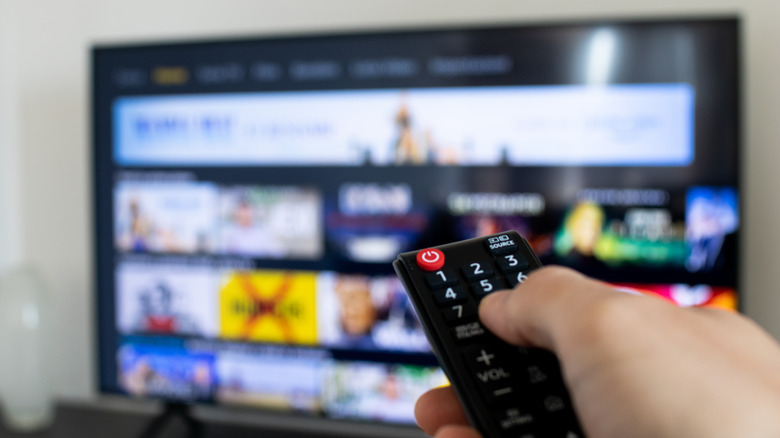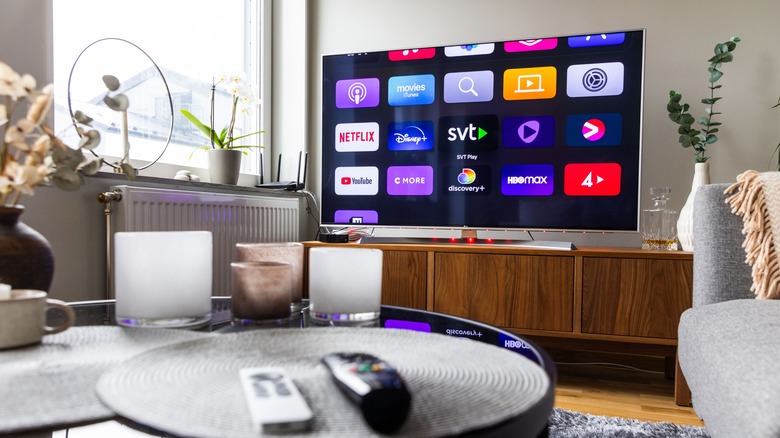How Many Watts Are Used By Modern Smart TVs On Average & Does Screen Size Affect It?
Modern-day smart televisions may be leagues ahead of the boxy rabbit-eared contraptions of yesteryear, but even the best smart TVs out there still require electricity to operate. But with all of their state-of-the-art functions, just how much energy do our smart TVs consume on average? Thankfully, it's not as much as you might think, although a number of factors can ultimately determine how much your smart TV contributes to your electric bill.
The wattage use of your TV depends on the specific kind you own. Older cathode-ray tube televisions typically eat up between 60 and 150 watts per hour. Smart TVs typically need to exert more power due to being connected to the internet and possessing more advanced streaming and gaming functions.
Consuming the most on average are plasma-screen TVs which can use upward of 300 watts of energy an hour. Manufacturers have implemented more conservative energy practices into LCD, LED, and OLED TVs and no longer produce plasma televisions. While these can also vary in energy usage, they typically don't go above 100 watts per hour, with some even using as little as 30 watts an hour.
Even at their worst, however, smart TVs still consume far less energy than many other common household appliances. For example, your average coffee maker can consume over 500 watts of energy while air conditioners on fan-only mode can eat up 750 watts. With that said, it's worth knowing the other factors that can affect your smart TV's energy usage and ways you can cut down on it.
TV screen size can affect its energy usage
The size of your smart TV is important for numerous reasons, from ensuring you'll be able to fit it in your car to making sure you have a console that can support it. If you're an energy-conscious individual, you may even be wondering if a TV's screen size will affect how much energy it consumes. In short, yes it does, although, once again, the type of TV you have also plays a role.
As a rule of thumb, you will see that number increase depending on the screen size. LEDs, LCDs, and OLEDs once again lead the race here, with smaller screened options between 15 and 24 inches typically consuming no more than 50 watts per hour. TVs under these categories that measure between 30 and 60 inches can eat up from 30 to 200 watts while playing, which still isn't that bad. On the flip side, small plasma TVs can reach up to 120 watts an hour, more than double what larger LEDs, LCDs, and OLEDs consume on average. Of course, your TV is also consuming bits of energy while on standby mode, but this rarely exceeds 2.6 watts, even for plasma screens.
Nevertheless, there are some simple ways to reduce the energy usage of your TV, both when it's in use and when it isn't. Lowering your TV's brightness and contrast settings, setting it to an energy saving mode, fully turning it off or unplugging it when not in use, and using a portable power station to power it are all ways you can help make a noticeable dent on your next energy bill.

